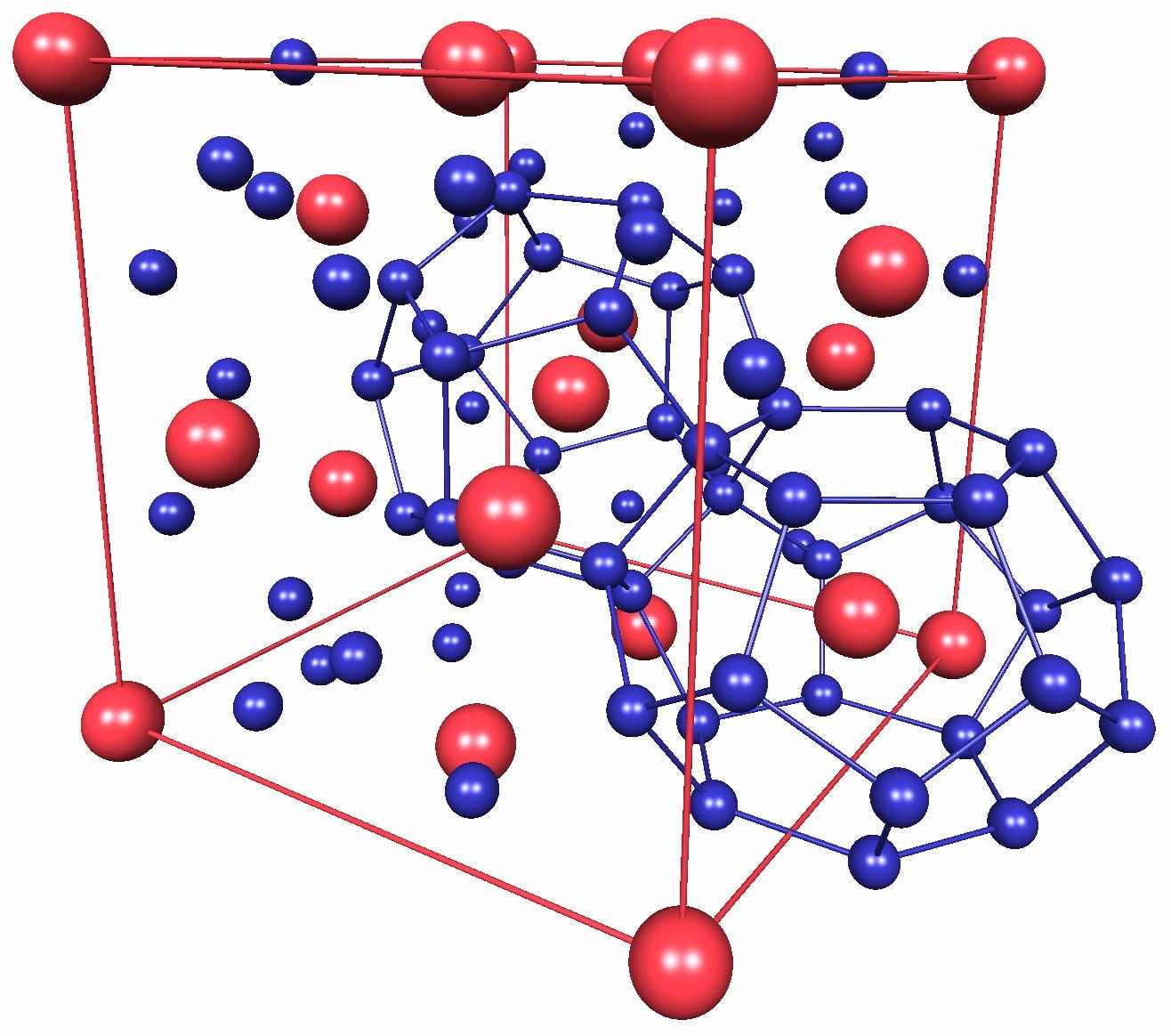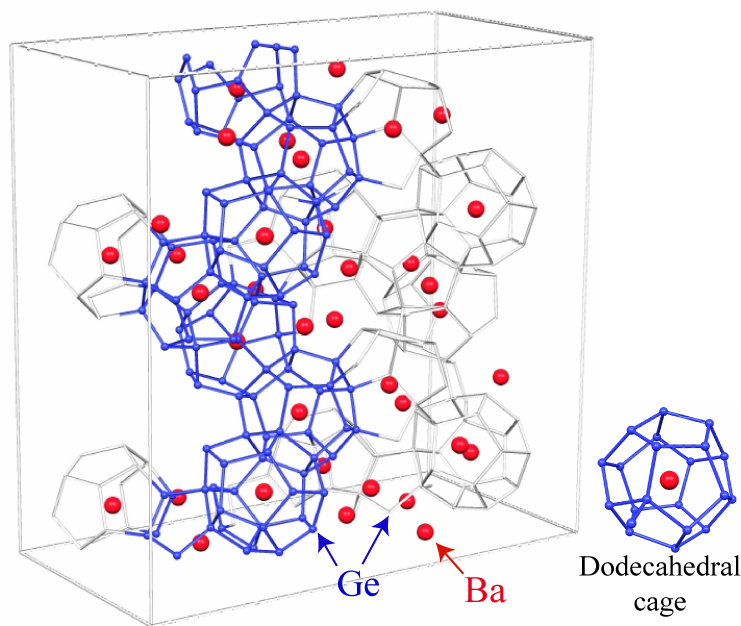Studies of Group-IV Clathrates
J. H. Ross Group, Department of Physics, Texas A&M University


Studies of Group-IV ClathratesJ. H. Ross Group, Department of Physics, Texas A&M University |
 |
| Group-IV clathrates are cage-type materials
with a crystalline framework of Si, Ge, and Sn encapsulating alkali,
alkaline-earth, etc. atoms (larger spheres at right, and in animation above). Many
elements may be substituted for the framework and the cage-center
atoms. We have been using NMR, magnetic
measurements, transport, and other techniques to better understand
these materials.
At right are pictured cages from the type-I
structure. Some of our current work involves BaGaSn clathrates, with with
Ba ions (large red atoms) enclosed in the cages. We
are using NMR and computational studies to analyze the atomic "rattling" or
tunneling behavior of the Ba ions, and the resulting anomalous phonon
behavior that strongly affects the low-temperature thremal properties.
|
 |
 |
A portion of the helical cage structure of the
chiral-type clathrate is shown at left. Our group is also studying
transition-metal and rare-earth substitution in these clathrate materials. Magnetism in the clathrates offers a number of
interesting possibilities. The expanded tetrahedral framework can lead
to relatively high-mass charge carriers, which in turn may lead to
enhanced superconducting and magnetic behavior. Rare earth substitution
in the cages could be used to create Kondo insulator or similar types
of behavior. These are some of the interests we have in these systems. |
